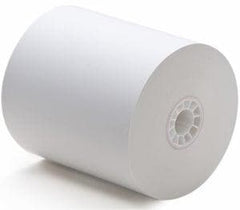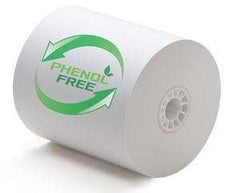Receipt Paper: Everything You Need To Know
When’s the last time you were handed a receipt? Have you ever wondered why receipt paper feels so different from other types of paper? Are you someone that wants to learn more about what receipts are made out of and what they’re used for? Well, you’ve come to the right place.
Receipt paper isn’t like normal paper that you write on or feed through a printer. There’s no ink involved, it’s designed with several different coats, and it has a unique feel to it that most people can’t describe. It’s safe to say that paper receipts are quite the mystery to most people today, despite coming in contact with them on a daily basis.
So, what is receipt paper?
Invented by Jack Kilby in the mid-1960’s, thermal receipt paper is a special type of paper that’s widely used all over the world. In its early development, thermal paper was utilized with calculators and fax machines, but today we largely use them for paper receipts when shopping.
A majority of the confusion surrounding thermal paper has to do with the fact that there’s no ink involved, especially since that’s how most of our at-home printers work. Instead, thermal paper relies on heat to create an image or display text on the piece of paper. It’s a unique process that’s rather interesting when it’s broken down.
First, you must understand that thermal paper consists of multiple different layers -- the base, precoat, thermal coat, reverse coat, and top coat. Each coat serves a different purpose when creating or preserving the image on the paper. Let’s take a closer look at each layer:
- Base Coat - normal paper generally made out of wood pulp. Most thermal paper starts out as normal paper, but it’s the other coats that start getting scientific.
- Precoat - on top of the base coat, the precoat consists of a layer of primer. It helps provide a smooth surface for the other coats, as well as absorbing the activated dyes after printing.
- Thermal Coat - made up of dozens of different compounds, including leuco dyes (responsible for the color), developers (BPA and BPS), and sensitizers (improve reaction to temperature).
- Top Coat - a top coat is often added to increase the longevity of the image on the paper. It’s not always featured, but acts as a quality protectant and preservant over time.
- Reverse Coat - a reverse coat often serves the same purpose as the top coat. It protects the image and makes the thermal paper more durable over time.
You’ll generally find thermal receipt paper in rolls, which are also called jumbos. The only real downside to this is you don’t get a straight piece of paper after it’s done printing. Some thicker receipt paper solves this issue, but not all of them do.


3 1/8" x 220' Thermal Paper (50 rolls/case) - BPA Free
BUY NOWIs Receipt Paper Recyclable?
Despite how common receipt paper is in today’s society, many people are growing very concerned with some of the chemicals involved in the thermal coat. The major ones on everyone’s mind are Bisphenol-A (BPA), Bisphenol-S (BPS), and other phenolic chemicals.
Since thermal receipt paper contains these chemicals, they’re generally not safe to recycle in most areas. The chemicals are too difficult to remove in the recycling process, which could pose a threat to people once recycled. That’s why many companies are turning to phenol-free receipt paper.
At POS Paper, our phenol-free thermal paper doesn’t use Bisphenol-A (BPA) or Bisphenol-S (BPS). You don’t have to worry about it damaging the environment or damaging your customer’s health. Instead, you can feel good about offering receipts and handing them out daily.


